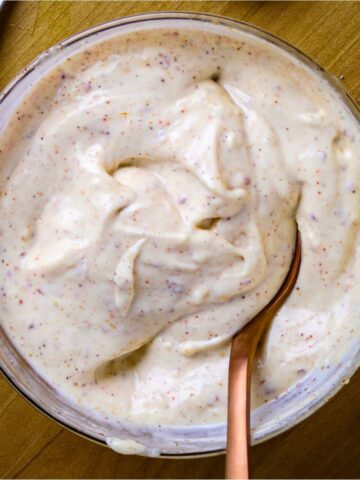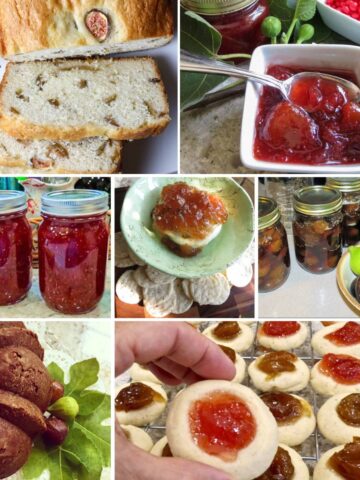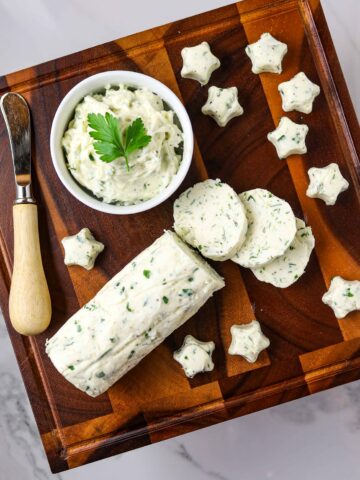Making Fig Preserves is an easy task of cooking fresh or frozen figs with sugar then packing them into sterilized jars to enjoy them year-round.
As an Amazon Associate, I earn from qualifying purchases. I have used these products highlighted below and recommend them for your convenience. Please note that there are Affiliate Links in the content of the Louisiana Woman Blog, and I will earn a commission if you purchase through those links. Thank you!
I didn't always like figs as much as I do now. The fondness has come later in life. It's like those things you take for granted that have been around forever, and all of a sudden, they get your attention. Like those azalea bushes you've seen blooming year after year in your grandmother's yard, then you go off to college and see those same bushes in bloom all around campus, and you have to admit, "Oh, I love azaleas!"
Or, like the congealed salad served every holiday meal that the grown-ups just raved about, and you turned your nose up to it. Then one Christmas, you think, "That looks good!" and after one bite, you're hooked.
Or, the grown-up in the family who always seemed to be scolding you kids (for a good reason) at family gatherings, then one day you grow up and discover their wisdom and how fun-loving they really are.
My fig appreciation came in an all of a sudden way also. I think it started with my Mama's fig preserves she always sent home with us after a visit, or she brought with her when she came to Arkansas. As a child, I liked the taste of figs, but I never liked the way they used to make my hands sticky and itchy when we picked them from my grandmother's orchard. I did not have much patience to be in the hot, humid summer weather, either. Now, I look forward to the hunt of gathering ripe figs early in the morning before the heat sets in for the day thinking the whole time in what way I'll get to enjoy them.
Fig trees have been popular in the landscape of southern gardens for a long time. They can grow into beautiful round shapes with their limbs touching the ground and as tall as 30 feet high with leaves having 3-5 lobes as long as 10 inches. Their fruit is full of minerals, vitamins and fiber. They can be eaten right off the tree or prepared in many sweet and savory dishes or even dried for cooking or snacking.
When I was growing up almost everyone had a fig tree in their yard. In early summer it was not an unusual thing to walk up to your neighbors front door and be greeted with that sweet syrupy smell of preserved figs before you even entered the house. Those jewel filled jars were used throughout the year for making tarts, baking cakes and cookies or just for a snack of slathered preserves on a piece of white Evangeline Maid bread. The latter was a favorite afternoon snack at our house. That and peanut butter and Steen's syrup sandwiches. No need for store-bought snacks.


One morning a few weeks ago at the end of fig season Mama and I got up early and picked the fruit from her fig tree then we headed out to her grandparents old home place. There we found a tree with light green figs my cousin calls white figs. Different from the common celeste fig that is in her yard, but very good. Then we went to a friend of a friend's yard and found a tree with dark purple figs that look like miniature eggplants. Delicious, too! (God bless those generous hearts who share their figs!)
After the picking, we ended up in her kitchen pulling out the heavy pots, canning jars, sugar and baking soda getting everything ready for the canning process. I love making memories with my Mama in her kitchen. We both said that we often think of her mother while we are cooking in the kitchen. Here is Mama's simple recipe and instructions for preserving figs:
Fig Preserves
5 pint jars with lids and screw tops
1 tablespoon baking soda
7 cups fresh, peeled figs
4 cups sugar
Place jars and screw tops in the dishwasher to sterilize. Rinse figs in fresh, cool water.
Soak the figs in a sink full of fresh, cool water and 1 tablespoon of baking soda. Just a few minutes so the figs don't soak up the water. Rinse again. Place figs in a tall, heavy pot like a soup pot.
Place pot on burner and add sugar, but do not stir. Turn burner on to medium heat and make sure figs don't stick to bottom of pot. If they do you may have to lower heat. When figs begin to release their juices then you can begin stirring the sugar into the figs. This is to help the figs not break up too much. Stir occasionally and cook for about an hour.
This is my MaMa Trahan's foolproof fig cooking method (passed down from generation to generation and now to you.) To tell if it is cooked enough, place a small spoonful of juice on a small plate and run your finger through the syrup. If the juice stays apart then it is ready to be poured into the jars. If not continue cooking. To fill jars you need to cut the bottom of a plastic cup out to use as a funnel if you don't have one. Place on top of jar that comes right out of the dishwasher. Wrap a dish towel around the jar and twist the towel ends around to use as a handle so you don't burn yourself and to hold jar in place for filling.
Take a ladle and pour preserves into the jars until full.Take a knife and pass it between preserves and inside of jar to release any air bubbles. Take new round lids out of box and rinse and dry them. Then place on filled jars and screw on lids. The jars will set and as they cool you will hear the pop of the center of the lids as they sink in and seal the preserves in the jars. Fill the rest of the jars and you're done!
Fig season may be finished in your neck of the woods, but it's still here in Arkansas. So my fancy for figs fix gets stretched out a little longer. Yippee! Since this is the first of Five Days of Figs, next I will be sharing Day 2 with a cake recipe that can be made two ways using these preserves. See you then!















Jetty LeMaire
Kay
I’m canning figs this weekend and I will try your grandma’s test to see when they are ready. I have never heard that but I will sure try it.
Louisiana Woman
Hi! It works well for me since I tend to over cook my jams and preserves. Thanks for the comment and happy canning!
Justine Livingstone
Thanks hun IV just been up to visit family and came home with figs from her tree ☮️❤️🌞new Zealand
Louisiana Woman
Great, you're welcome! Good to know when and where in the world they are in season. Our's is mainly in july and some varieties bear all summer long. Enjoy!